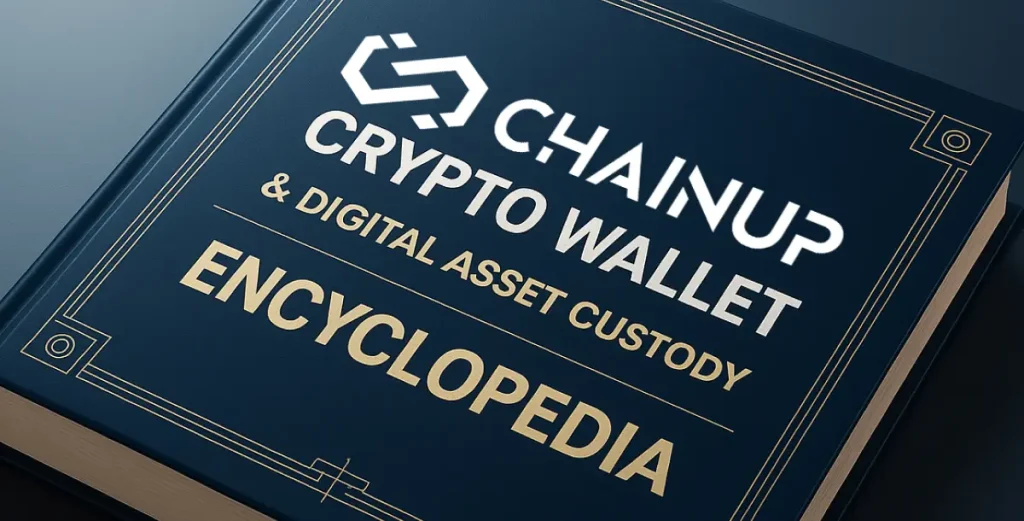Crypto intelligence is not a single product. It’s a combination of two distinct missions often handled by different teams:
- Financial crime & compliance. This involves screening deposits/withdrawals in real time (KYT), detecting sanctions/AML risk, investigating flows, satisfying Travel Rule, and producing audit-ready case files that regulators will accept.
- Market & on-chain insight. This is about seeing who’s moving what and where, tracking token treasuries and bridges, monitoring “whale” flows, and turning on-chain signals into research or trading decisions.
Most organizations end up using one tool from each camp. If you’re also launching an exchange or wallet, you may favor a platform that bundles compliance into your stack and layer a best-in-class investigations/analytics product as your volume and regulatory scrutiny grow.
How We Selected the Crypto Intelligence Platforms in 2025
We’ve shortlisted five platforms that teams actually buy in 2025 and explain how they differ on coverage, depth, and deployment, so you can avoid a months-long Request for Proposal (RFP) process and focus on fit:
1. Proven multi-chain coverage
We prioritized vendors that actively label major L1s/L2s (BTC, ETH, Tron, Solana, major rollups), high-risk bridges/mixers, and prominent centralized and decentralized exchanges (CEX/DEX) —and update that coverage on a weekly cadence. When evaluating a vendor, ask for a coverage changelog and sample attribution on your specific chains.
2. Enterprise adoption and regulator familiarity
Adoption by traditional financial institutions, exchanges, custodians, and public-sector units matters because it signals outputs and workflows that auditors already recognize. It also means better documentation, robust service level agreements (SLAs), and reliable evidence exports.
3. 2025 product velocity & roadmap transparency
The crypto market moves fast. We looked for vendors that have been shipping new datasets, chain coverage, case-management features, and policy tooling this year, not just marketing them. Consistent roadmap briefings and quarterly release notes are green flags.
4. Actionable outputs
The platform must deliver real-time risk scores, alerts, and case primitives, plus webhooks/APIs that let your systems block, hold, or escalate transactions in milliseconds.
5. Signal quality & explainability
Low false-positive rates are essential for controlling cost and improving user experience. We favored tools that explain why a transaction is flagged as risky so analysts can defend a decision to auditors or law enforcement.
6. Privacy & security posture
You’ll be sending addresses, and sometimes Personally Identifiable Information (PII), and case notes to these platforms. We weighed factors like SOC 2/ISO 27001 compliance, data-residency options, access controls, and redaction features for secure, regulator-safe exports.
7. Fit to buyer persona
- Regulated venue/payment service providers (PSPs): Focus on a compliance-first approach prioritizing KYT, sanctions, Travel Rule, and casework.
- Fund/treasury/research: Look for fast labeling, detailed wallets/flows analysis, and smart alerts.
- New exchange/wallet: Consider integrated stacks to compress time-to-market.
Top 5 Crypto Intelligence Platforms in 2025
Picking a crypto intelligence stack in 2025 starts with being honest about your job-to-be-done. Regulated venues need bulletproof AML/KYT, sanctions screening, Travel Rule messaging, and case files that auditors will accept.
Funds and treasurers care more about labeled flows, alerting, and research-grade dashboards. Most mature teams run two tools—one compliance-first and one market-intel—and then add integrations for custody, on/off-ramps, and case management so decisions are automated, explainable, and defensible.
1. Chainalysis — the investigations & KYT workhorse
Best for: Exchanges, banks, and law enforcement teams that need case-grade tracing and 24/7 transaction risk monitoring.
Chainalysis is the default pick when you need both real-time screening and investigator-grade forensics in one place. Reactor lets analysts trace funds across chains with rich entity attribution, hop-by-hop visuals, and exportable evidence that holds up in audits and law-enforcement referrals.
KYT scores deposits and withdrawals in milliseconds, pushes alerts to your case queue, and supports escalation workflows so ops can block, hold, or release confidently. Coverage spans major L1s/L2s, mixers, bridges, and high-risk services; threat intel and typologies are updated frequently, so playbooks stay current.
Deployment is straightforward, with a SaaS console for analysts, mature APIs/webhooks for your risk engine, and connectors into SIEM, CRM, and case management tools for clear audit trails. What teams like most is explainability: alerts come with the “why,” not just a red score, so compliance can document decisions.
Plan for change management. Give non-forensic staff role-appropriate training to disposition alerts without analyst hand-holding. Pricing is sales-led and can climb with volume, chains, and seats, so model total cost of ownership and test throughput at your peak hours before committing.
2. TRM Labs — fast-moving, cross-chain risk & forensics
Best for: Risk teams that want broad chain coverage, investigations, and AML workflows in one stack.
TRM is the “all-in-one” stack for monitoring, investigations, and case management under a single roof. Risk teams wire their KYT-style screening into deposits/withdrawals, then pivot to the same console for hop-by-hop cross-chain tracing, entity attribution, and exportable case files that satisfy auditors and law enforcement.
The product cadence is brisk: new chains and heuristics land frequently, reducing blind spots across L1s, L2s, bridges, mixers, and DEX venues. 2025 additions like the Beacon Network help compliance teams coordinate incident response, while partnerships on identity/behavioral risk tighten the loop between off-chain KYC signals and on-chain activity.
Deployment fits modern stacks—SaaS console for analysts, APIs/webhooks for your risk engine, alert routing to case systems/SIEM, and explainable reasons attached to risk scores so analysts can defend decisions. The caveat is the same one you should apply to any vendor: depth varies by chain.
Before you sign, run live tests on the networks and bridges you actually touch, measure alert latency, false-positive rates, and peak-hour throughput, review PII handling and
3. Elliptic — compliance screening at the exchange scale
Best for: Centralized venues and fintechs prioritizing low cost-per-screen and cross-chain risk detection.
Elliptic is the pick when your priority is screening millions of deposits and withdrawals with low latency and low cost-per-screen, while still catching cross-chain risk that hops through bridges, mixers, and DEXs.
Its “holistic” approach ties together address/transaction screening, sanctions/PEP/adverse media checks, and automated AML workflows, so ops teams can block, hold, or release with clear audit trails. Financial institutions and custodians like Elliptic because outputs map cleanly to policy and plug into existing case systems and SIEMs; custody partners often bundle it into their workflows, which shortens integration for exchanges and fintechs.
2025 research helps risk leaders align procedures with supervisors’ expectations. Implementation is straightforward: analysts get a SaaS console for reviews; engineers wire APIs/webhooks into the deposit path; compliance configures rule sets, allow/deny lists, Travel Rule hooks, and escalation playbooks.
If you need deep, narrative-grade investigations, make sure your contract includes forensics modules or plan to pair Elliptic with a dedicated investigations tool.
As with any vendor, validate on your live traffic: measure peak throughput, false-positive rates, sanctions-list update cadence, case export formats, and total cost before you lock in.
4. Nansen — investor-grade on-chain intelligence
Best for: Funds, token teams, and advanced retail that need wallet labeling, smart alerts, and flow analytics.
Nansen is the go-to when your edge comes from seeing flows first and knowing who’s behind them. Funds, token teams, and advanced treasurers use it to track labeled wallets, set smart alerts for whale moves, and turn real-time on-chain signals into trade or treasury actions.
The current Nansen 2 experience prioritizes speed, label breadth, and alerting, so you can catch big inflows to CEXs, sudden LP pulls, bridge surges, or treasury rebalancing as they happen—not hours later. Analysts like the way entity tags roll up into readable dashboards, while quants wire the API into models for strategy triggers or risk limits.
It’s especially useful across DeFi/L2 activity—AMM adds/removes, staking in/out, bridge routes—where watchlists + thresholds cut noise and surface only actionable events. Implementation is simple: create curated watchlists, route alerts to Slack/Telegram/webhooks, and use notebook exports/CSV for post-trade analysis and investor reports.
The catch is scope: Nansen isn’t a compliance suite—no KYT sanctions screening or regulator-grade casework—so if you run fiat ramps or a venue, pair it with a KYT/investigations vendor for AML obligations.
As with any signal product, back-test alert logic on your markets, check latency and label accuracy on the chains you trade most, and calibrate thresholds to keep noise (and false positives) low while still catching the moves that matter.
5. ChainUp — integrated KYT & tracing inside an exchange/custody stack
Best for: Builders who want compliance + infrastructure (white-label exchange, MPC custody) with embedded KYT/travel-rule tooling to cut integration time and total cost of ownership.
ChainUp is a strong fit when you’re building or relaunching a venue/wallet and want to compress time-to-market by bundling infrastructure + compliance under one roof.
The offering pairs a white-label exchange and MPC/HSM custody with an AI-assisted KYT/trace layer, sanctions screening, and built-in Travel Rule workflows, so deposits can be risk-scored at the edge, suspicious flows can be escalated to case review, and compliant transfers can be messaged to counterparties without stitching together five vendors.
In practice, engineers wire screening APIs/webhooks into the deposit path, ops teams use an admin console for alert triage and investigations (with exportable artifacts), and treasury gets freeze/burn hooks, address whitelists, and segregation controls aligned to your policy.
The appeal is lower integration cost and fewer moving parts: one vendor for custody, exchange, compliance plumbing, observability, and ongoing maintenance.
The trade-off is depth at the very high end. If you need regulator-standard, narrative-grade investigations at scale, many enterprises still pair ChainUp with a tier-1 intel vendor for special cases while keeping ChainUp as the operational backbone.
Before you sign, run a live validation of your chains and bridges, test throughput and alert latency at peak, confirm the case export formats your auditors accept, and review your security posture, SLAs, and Travel Rule interoperability with your counterparties.
Conclusion
The 2025 crypto-intel landscape isn’t about finding a silver bullet—it’s about composing the right pair of tools for your job. Most mature teams run one compliance-first platform for KYT, sanctions, Travel Rule, and casework, and one market/on-chain intelligence platform for labels, flows, and alerts.
If you’re launching or re-platforming an exchange or wallet, an integrated stack like ChainUp can compress build time by bundling custody, exchange rails, and KYT/Travel Rule plumbing, then you can layer a tier-1 investigations tool for complex cases as volume and scrutiny rise.
Make the choice with a controlled bake-off. Test on your chains and bridges, measure alert latency, false positives, and screening throughput at peak, verify case exports your auditors will accept, and model TCO against growth. Wire outputs into your risk engine, SIEM, and ticketing from day one so decisions are automated, explainable, and defensible.




